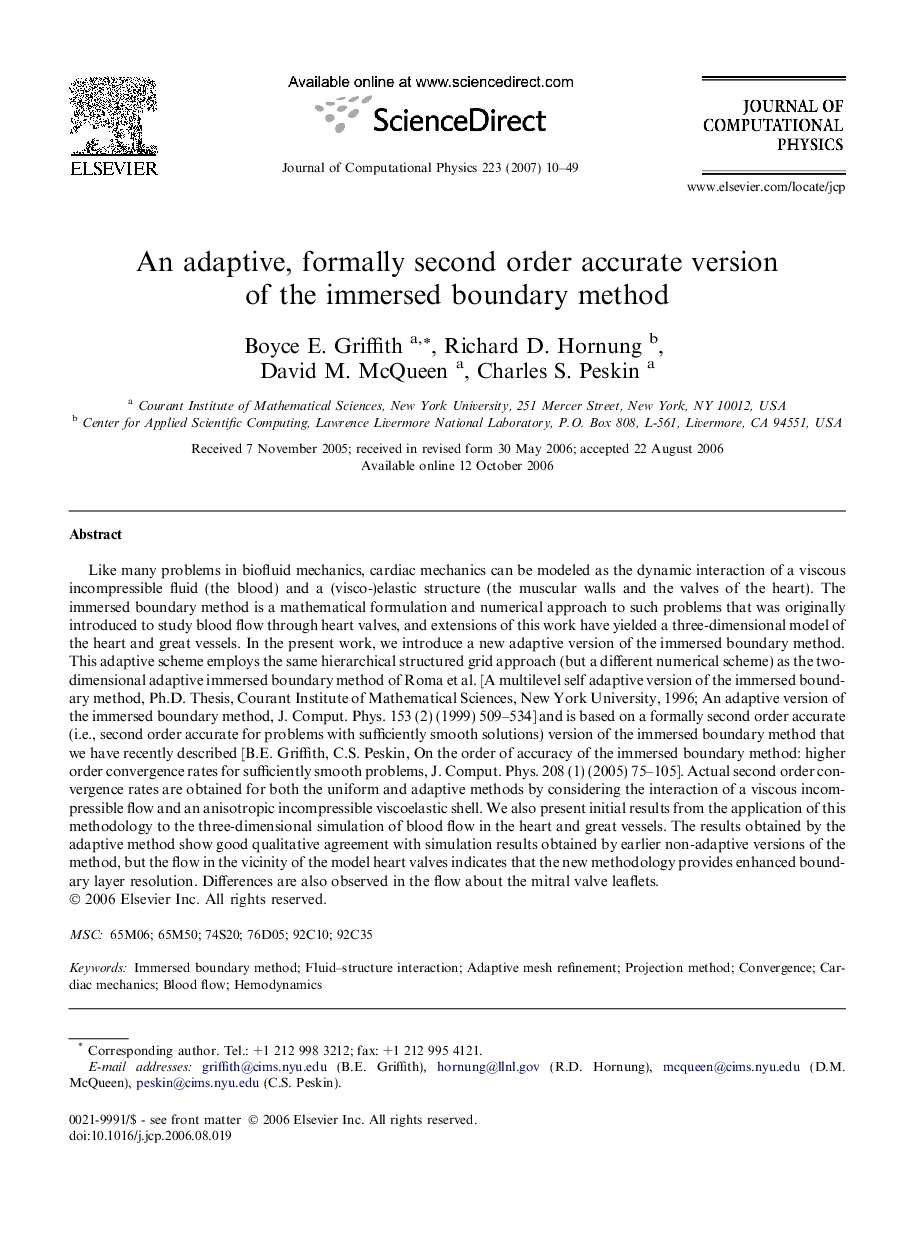| کد مقاله | کد نشریه | سال انتشار | مقاله انگلیسی | نسخه تمام متن |
|---|---|---|---|---|
| 521504 | 867772 | 2007 | 40 صفحه PDF | دانلود رایگان |

Like many problems in biofluid mechanics, cardiac mechanics can be modeled as the dynamic interaction of a viscous incompressible fluid (the blood) and a (visco-)elastic structure (the muscular walls and the valves of the heart). The immersed boundary method is a mathematical formulation and numerical approach to such problems that was originally introduced to study blood flow through heart valves, and extensions of this work have yielded a three-dimensional model of the heart and great vessels. In the present work, we introduce a new adaptive version of the immersed boundary method. This adaptive scheme employs the same hierarchical structured grid approach (but a different numerical scheme) as the two-dimensional adaptive immersed boundary method of Roma et al. [A multilevel self adaptive version of the immersed boundary method, Ph.D. Thesis, Courant Institute of Mathematical Sciences, New York University, 1996; An adaptive version of the immersed boundary method, J. Comput. Phys. 153 (2) (1999) 509–534] and is based on a formally second order accurate (i.e., second order accurate for problems with sufficiently smooth solutions) version of the immersed boundary method that we have recently described [B.E. Griffith, C.S. Peskin, On the order of accuracy of the immersed boundary method: higher order convergence rates for sufficiently smooth problems, J. Comput. Phys. 208 (1) (2005) 75–105]. Actual second order convergence rates are obtained for both the uniform and adaptive methods by considering the interaction of a viscous incompressible flow and an anisotropic incompressible viscoelastic shell. We also present initial results from the application of this methodology to the three-dimensional simulation of blood flow in the heart and great vessels. The results obtained by the adaptive method show good qualitative agreement with simulation results obtained by earlier non-adaptive versions of the method, but the flow in the vicinity of the model heart valves indicates that the new methodology provides enhanced boundary layer resolution. Differences are also observed in the flow about the mitral valve leaflets.
Journal: Journal of Computational Physics - Volume 223, Issue 1, 10 April 2007, Pages 10–49